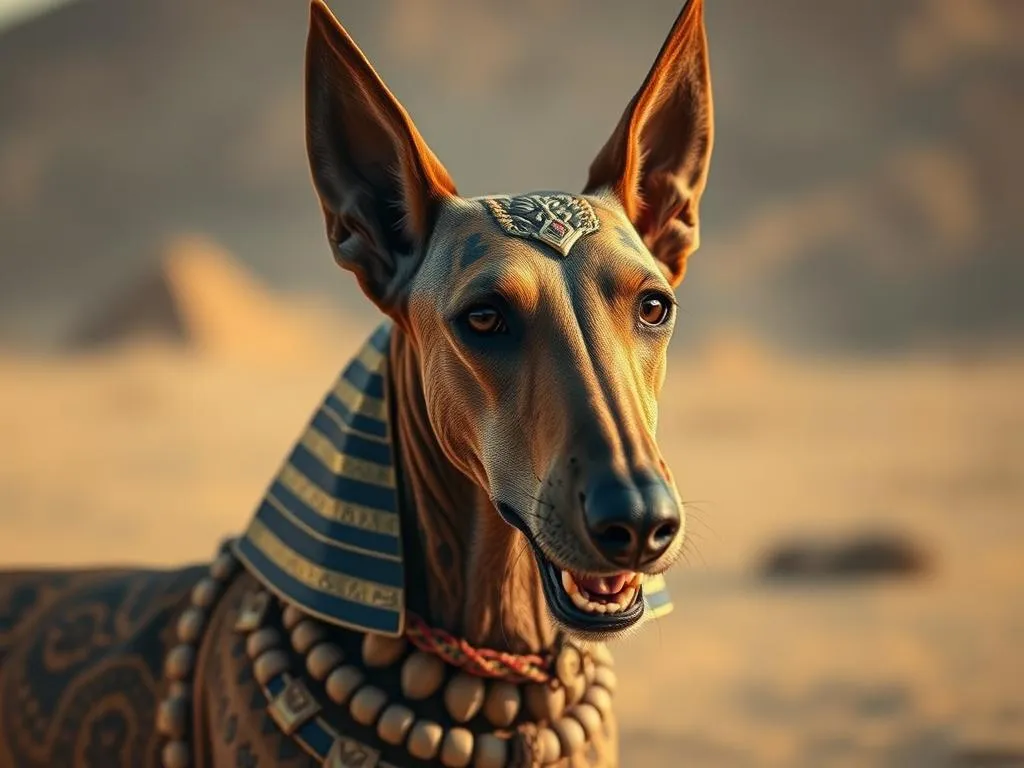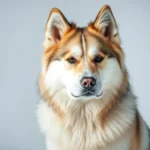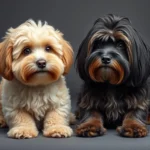
Introduction
Dog breeds represent distinct varieties within the species Canis lupus familiaris, each developed for specific purposes, characteristics, and temperaments. Understanding different dog breeds is crucial for potential owners as it helps them choose a companion that fits their lifestyle and preferences. Among the myriad of dog breeds, the Pharaoh Hound stands out for its rich history, striking appearance, and unique personality traits. This breed not only captivates dog lovers but also embodies a fascinating blend of ancient heritage and modern companionship.
History of the Pharaoh Hound
Origins
The Pharaoh Hound boasts a long and storied history, believed to have originated in ancient Egypt over 5,000 years ago. This breed is often depicted in ancient Egyptian art, where they are shown alongside pharaohs and as companions to nobility. The geographical roots of the Pharaoh Hound are tightly linked to the Mediterranean region, particularly Malta, where they were developed for hunting small game, such as rabbits and birds.
Cultural Significance
In ancient Egypt, the Pharaoh Hound was more than just a hunting companion; it was regarded as a sacred animal. These dogs were believed to have a special connection with the divine, often associated with the goddess of the hunt, Artemis. The Pharaoh Hound’s keen sight and speed made it an excellent hunter, allowing it to excel in the vast arid landscapes of Egypt. The breed’s presence in ancient Egyptian society underscores its importance, as they were often buried with their owners, highlighting the bond between the species.
Physical Characteristics
Size and Build
The Pharaoh Hound is a medium-sized dog, typically standing between 21 to 25 inches tall at the shoulder and weighing between 40 to 60 pounds. Their elegant build features a long neck, deep chest, and a well-proportioned body that conveys both strength and grace. This breed is known for its athleticism, allowing it to be agile and quick, making it an ideal hunting partner.
Coat and Color
The coat of the Pharaoh Hound is short, dense, and smooth, providing a sleek appearance. Their fur is relatively low maintenance but requires regular brushing to minimize shedding. Common colors include tan, chestnut, and red, often accompanied by white markings on the chest, toes, or tip of the tail. These color variations add to their distinctive look.
Distinctive Features
One of the most recognizable traits of the Pharaoh Hound is its large, erect ears that resemble those of a bat. These ears serve a functional purpose, enhancing their hearing capabilities essential for hunting. Additionally, the breed has a long, narrow muzzle and a whip-like tail that adds to its overall elegance.
Temperament and Behavior
General Personality Traits
The Pharaoh Hound is known for its friendly and affectionate nature. They are typically good-natured, playful, and loyal companions. This breed tends to be social and enjoys interaction with humans and other pets, making them an excellent choice for families. However, their independent streak can sometimes lead to stubbornness.
Intelligence and Trainability
Intelligent and eager to please, the Pharaoh Hound is relatively easy to train. However, their independent nature means they require consistent and positive reinforcement training methods. Early socialization and obedience training are crucial for developing a well-rounded dog. Engaging them in various training activities can also help stimulate their minds and reduce boredom.
Exercise Needs
Given their energetic disposition, the Pharaoh Hound requires regular exercise to remain happy and healthy. Daily walks, jogs, or play sessions in a secure yard are recommended to meet their physical needs. Engaging in activities like lure coursing or agility training can also provide the necessary mental and physical stimulation.
Health and Care
Common Health Issues
Like many breeds, the Pharaoh Hound may be predisposed to specific health issues, including hip dysplasia, certain eye conditions, and skin allergies. Regular veterinary check-ups and health screenings can help in early detection and management of these conditions. Responsible breeding practices can also minimize genetic predispositions.
Grooming Requirements
The grooming needs of the Pharaoh Hound are relatively low due to their short coat. They require occasional brushing to remove loose hair and maintain coat health. Regular ear cleaning is essential, given their large ears, which can trap dirt and moisture. Additionally, routine dental care, including brushing, helps maintain their oral health.
Dietary Needs
A balanced diet is crucial for the overall health of a Pharaoh Hound. High-quality dog food, formulated for their age and size, should be a priority. Owners should consult their veterinarian for specific dietary recommendations and feeding schedules. Monitoring their weight is essential, especially since this breed can be prone to obesity if not exercised adequately.
Living with a Pharaoh Hound
Ideal Home Environment
The Pharaoh Hound thrives in an environment that allows for plenty of space to run and play. A home with a securely fenced yard is ideal, as they have a strong prey drive and may chase after small animals. They adapt well to various climates but should be protected from extreme weather conditions, given their short coat.
Activities and Engagement
Maintaining the engagement of a Pharaoh Hound is vital to prevent boredom-related behaviors. Activities such as fetch, agility training, and interactive toys can keep them mentally stimulated. Additionally, including them in family outings or social gatherings can provide the necessary socialization and bonding experiences.
Comparison with Other Breeds
Similar Breeds
The Pharaoh Hound shares similarities with the Ibizan Hound and the Azawakh, both of which are also sighthounds. Like the Pharaoh Hound, these breeds are known for their speed, agility, and hunting capabilities. They also have similar physical characteristics, including a lean build and short coat.
Differences
While the Pharaoh Hound is known for its friendly and affectionate demeanor, the Ibizan Hound can be more reserved and aloof. Additionally, the Pharaoh Hound’s grooming needs are minimal compared to some other breeds, making it an appealing choice for owners seeking low-maintenance pets.
Adoption and Purchase Considerations
Finding a Pharaoh Hound
When considering adding a Pharaoh Hound to your family, it’s essential to find a responsible source. Reputable breeders or breed-specific rescues are excellent places to start. Researching the breeder’s practices and ensuring they prioritize the health and temperament of their dogs is crucial.
Cost of Ownership
The cost of owning a Pharaoh Hound can vary significantly based on factors such as location, breeder reputation, and health screenings. Initial costs may include adoption fees or purchasing costs, while ongoing expenses will cover food, grooming, routine veterinary care, and training. It is essential to budget for these costs to ensure the long-term well-being of your new companion.
Conclusion
The Pharaoh Hound is a breed that combines beauty, history, and a loving personality. From their ancient roots in Egypt to their modern roles as beloved family companions, these dogs offer a unique blend of traits that make them stand out in the world of dog breeds. Their affectionate nature, intelligence, and athleticism make them ideal for active families and individuals alike. Understanding the specific needs, characteristics, and history of the Pharaoh Hound can lead to a rewarding companionship that enriches both the dog’s and the owner’s lives.
In considering a Pharaoh Hound, potential owners are encouraged to embrace responsible ownership and appreciate the rich heritage that this remarkable breed embodies.









